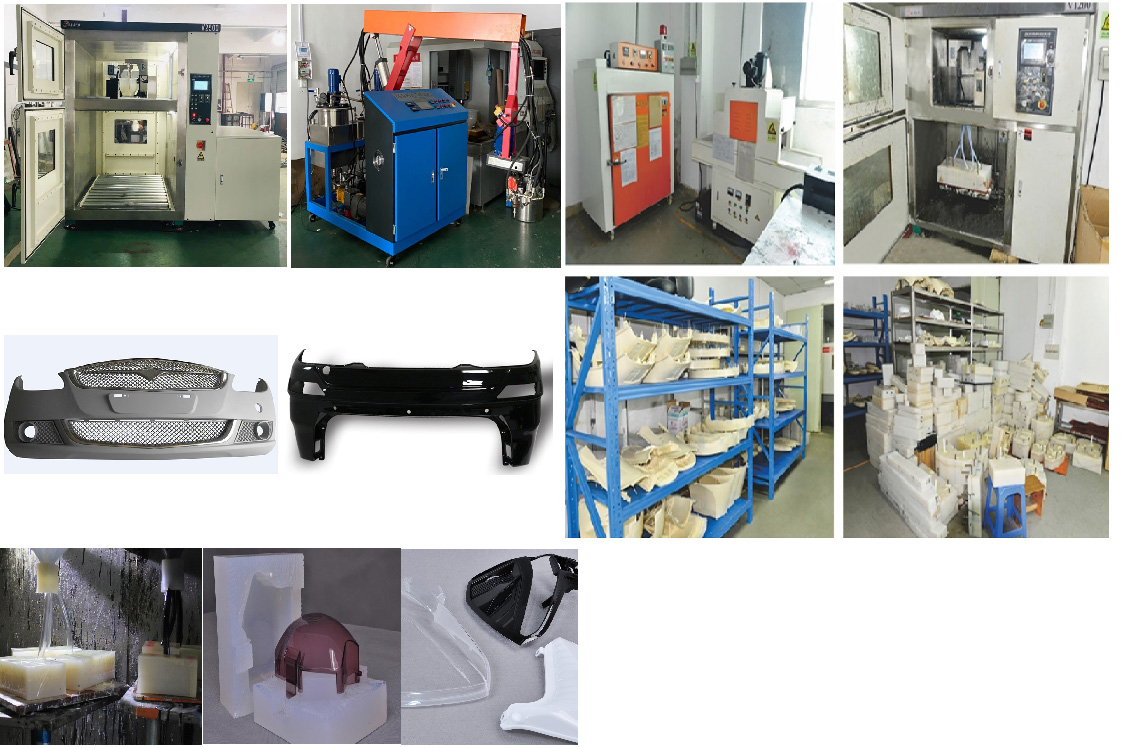Generally, as for medium to small parts(less than 1200mm), it is good to use vacuum casting for manufacturing. Vacuum casting, sometimes referred to as Urethane casting or Polyurethane casting uses siliconemoulds to make plastic and rubber components under vacuum. It is an extremely adaptable manufacturing process capable of mimicking the injection moulding to produce complex parts in polyurethane resins and cast nylon. Due to the process being under vacuum, it produces high-quality bubble-free casting with smooth surface texture without any blemishes.
But as for bigger parts(more than 1200mm), it is good to use RIM technology for manufacturing. Reaction injection molding (RIM) is the process of mixing two or more liquid (monomer) components, typically a polyol (resin) and an isocyanate (hardener) in a specialized mixing head. The mixed material is then injected into a mold cavity at low pressure. The mold is typically made of two halves but can be made of more sections to allow for undercuts and additional complexity. RIM offers design freedom and flexibility, allowing for the integration of diverse features, such as ribs, bosses, curves, and undercuts, into a single part. This process can also produce lightweight and durable parts with an excellent strength-to-weight ratio.
Specific features are as follows:
● Material: ABS, PP, POM, PC, PMMA, TPU, Silicone, etc.
● Precision:±0.20mm/100mm.
● Maximum pouring thickness 10mm.
● Maximum pouring size: 2000mm*1200mm*1000mm.
● Best pouring weight:10KG.
● RIM is used for car fenders, front and rear bumpers, center console, etc.
